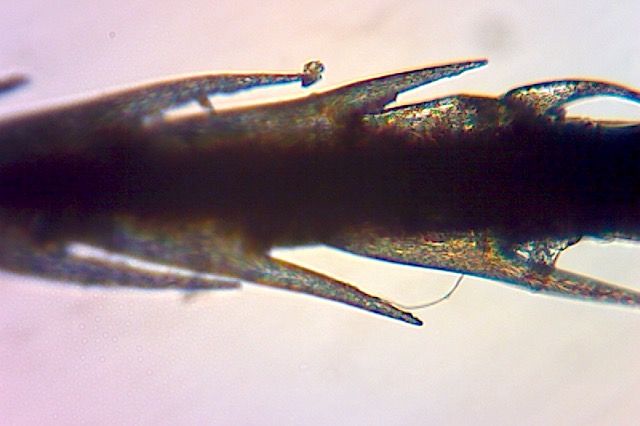|
Radiarctia Jacksoni
''Radiarctia jacksoni'' is a moth of the family Erebidae first described by Walter Rothschild in 1910. It is found in Ethiopia, Kenya, Zaire and Tanzania. The larvae feed on ''Commelina'', ''Aster'', ''Bidens pilosa'', '' Galimsoga parviflora'', ''Zinnia'', ''Boerhavia'' and ''Solanum ''Solanum'' is a large and diverse genus of flowering plants, which include three food crops of high economic importance: the potato, the tomato and the eggplant (aubergine, brinjal). It is the largest genus in the nightshade family Solanacea ...''. References Moths described in 1910 Spilosomina Moths of Africa {{Spilosomina-stub ... [...More Info...] [...Related Items...] OR: [Wikipedia] [Google] [Baidu] |
Walter Rothschild, 2nd Baron Rothschild
Lionel Walter Rothschild, 2nd Baron Rothschild, Baron de Rothschild, (8 February 1868 – 27 August 1937) was a British banker, politician, zoologist and soldier, who was a member of the Rothschild family. As a Zionist leader, he was presented with the Balfour Declaration, which pledged British support for a Jewish national home in Palestine. Rothschild was the president of the Board of Deputies of British Jews from 1925 to 1926. Early life Walter Rothschild was born in London as the eldest son and heir of Emma Louise von Rothschild and Nathan Rothschild, 1st Baron Rothschild, an immensely wealthy financier of the international Rothschild financial dynasty and the first Jewish peer in England. The eldest of three children, Walter was deemed to have delicate health and was educated at home. As a young man, he travelled in Europe, attending the University of Bonn for a year before entering Magdalene College, Cambridge. In 1889, leaving Cambridge after two years, he ... [...More Info...] [...Related Items...] OR: [Wikipedia] [Google] [Baidu] |
Aster (genus)
''Aster'' is a genus of perennial flowering plants in the family Asteraceae. Its circumscription has been narrowed, and it now encompasses around 170 species, all but one of which are restricted to Eurasia; many species formerly in ''Aster'' are now in other genera of the tribe Astereae. '' Aster amellus'' is the type species of the genus and the family Asteraceae. The name ''Aster'' comes from the Ancient Greek word (''astḗr''), meaning "star", referring to the shape of the flower head. Many species and a variety of hybrids and varieties are popular as garden plants because of their attractive and colourful flowers. 'Aster' species are used as food plants by the larvae of a number of Lepidoptera species—see list of Lepidoptera that feed on ''Aster''. Asters can grow in all hardiness zones. Circumscription The genus ''Aster'' once contained nearly 600 species in Eurasia and North America, but after morphologic and molecular research on the genus during the 1990s, it ... [...More Info...] [...Related Items...] OR: [Wikipedia] [Google] [Baidu] |
Moths Described In 1910
Moths are a paraphyletic group of insects that includes all members of the order Lepidoptera that are not butterflies, with moths making up the vast majority of the order. There are thought to be approximately 160,000 species of moth, many of which have yet to be described. Most species of moth are nocturnal, but there are also crepuscular and diurnal species. Differences between butterflies and moths While the butterflies form a monophyletic group, the moths, comprising the rest of the Lepidoptera, do not. Many attempts have been made to group the superfamilies of the Lepidoptera into natural groups, most of which fail because one of the two groups is not monophyletic: Microlepidoptera and Macrolepidoptera, Heterocera and Rhopalocera, Jugatae and Frenatae, Monotrysia and Ditrysia.Scoble, MJ 1995. The Lepidoptera: Form, function and diversity. Oxford, UK: Oxford University Press; 404 p. Although the rules for distinguishing moths from butterflies are not well establish ... [...More Info...] [...Related Items...] OR: [Wikipedia] [Google] [Baidu] |
Solanum
''Solanum'' is a large and diverse genus of flowering plants, which include three food crops of high economic importance: the potato, the tomato and the eggplant (aubergine, brinjal). It is the largest genus in the nightshade family Solanaceae, comprising around 1,500 species. It also contains the so-called horse nettles (unrelated to the genus of true nettles, '' Urtica''), as well as numerous plants cultivated for their ornamental flowers and fruit. ''Solanum'' species show a wide range of growth habits, such as annuals and perennials, vines, subshrubs, shrubs, and small trees. Many formerly independent genera like '' Lycopersicon'' (the tomatoes) and '' Cyphomandra'' are now included in ''Solanum'' as subgenera or sections. Thus, the genus today contains roughly 1,500–2,000 species. Name The generic name was first used by Pliny the Elder (AD 23–79) for a plant also known as , most likely ''S. nigrum''. Its derivation is uncertain, possibly stemming from the Latin w ... [...More Info...] [...Related Items...] OR: [Wikipedia] [Google] [Baidu] |
Boerhavia
''Boerhavia'' is a genus of over 100 species in the Nyctaginaceae family. The genus was named for Herman Boerhaave, a Dutch botanist, and the genus name is frequently misspelled "''Boerhaavia''". Common names include spiderlings and hogweeds. Taxonomy There are over 100 species in the genus ''Boerhavia'', which is in the family Nyctaginaceae, which includes the four o'clock flower. The genus was named for the Dutch botanist Herman Boerhaave, and often misspelt as "Boerhaavia". Common names include spiderlings and hogweeds. Description Some species are annuals and others perennials. In habit they generally are herbaceous. "Spiderling" refers to the appearance of those species that bear inflorescences on numerous long, slender stems, interlocking in a manner suggestive of a spider or spider's web. ''Boerhavia'' species generally are native to warm tropical regions. Significance Several species of ''Boerhavia'' are of importance as agricultural and horticultural weeds. Some a ... [...More Info...] [...Related Items...] OR: [Wikipedia] [Google] [Baidu] |
Zinnia
''Zinnia'' is a genus of plants of the tribe Heliantheae within the family Asteraceae. They are native to scrub and dry grassland in an area stretching from the Southwestern United States to South America, with a centre of diversity in Mexico. Members of the genus are notable for their solitary long-stemmed 12 petal flowers that come in a variety of bright colors. The genus name honors German master botanist Johann Gottfried Zinn (1727–59). Description Zinnias are annuals, shrubs, and sub-shrubs native primarily to North America, with a few species in South America. Most species have upright stems but some have a lax habit with spreading stems that mound over the surface of the ground. They typically range in height from 10 to 100 cm tall (4" to 40"). The leaves are opposite and usually stalkless (sessile), with a shape ranging from linear to ovate, and a color ranging from pale to medium green. Zinnia's composite flowers consist of ray florets that surround disk florets ... [...More Info...] [...Related Items...] OR: [Wikipedia] [Google] [Baidu] |
Bidens Pilosa
''Bidens pilosa'' is an annual species of herbaceous flowering plant in the daisy family Asteraceae. Its many common names include hitch hikers, black-jack, beggarticks, farmer’s friends and Spanish needle, but most commonly referred to as cobblers pegs. It is native to the Americas but is widely distributed as an introduced species in other regions worldwide including Eurasia, Africa, Australia, South America and the Pacific Islands.''Bidens pilosa''. Pacific Island Ecosystems at Risk (PIER). USFS. Description ''Bidens pilosa'' is a branched annual forb of[...More Info...] [...Related Items...] OR: [Wikipedia] [Google] [Baidu] |
Commelina
''Commelina'' is a genus of approximately 170 species commonly called dayflowers due to the short lives of their flowers. They are less often known as widow's tears. It is by far the largest genus of its family, Commelinaceae. The Swedish taxonomist Carl Linnaeus of the 18th century named the genus after the two Dutch botanists Jan Commelijn and his nephew Caspar, each representing one of the showy petals of '' Commelina communis''. The dayflowers are herbs that may be either perennial or annual. They are characterised by their zygomorphic flowers and by the involucral bracts called spathes that surround the flower stalks. These spathes are often filled with a mucilaginous liquid. Each spathe houses either one or two scorpioid cymes, with the upper cyme being either vestigial or bearing from one to several typically male flowers, and the lower cyme bearing several flowers. All members of the genus have alternate leaves. The Asiatic dayflower ('' Commelina communis'') is probab ... [...More Info...] [...Related Items...] OR: [Wikipedia] [Google] [Baidu] |
Moth
Moths are a paraphyletic group of insects that includes all members of the order Lepidoptera that are not butterflies, with moths making up the vast majority of the order. There are thought to be approximately 160,000 species of moth, many of which have yet to be described. Most species of moth are nocturnal, but there are also crepuscular and diurnal species. Differences between butterflies and moths While the butterflies form a monophyletic group, the moths, comprising the rest of the Lepidoptera, do not. Many attempts have been made to group the superfamilies of the Lepidoptera into natural groups, most of which fail because one of the two groups is not monophyletic: Microlepidoptera and Macrolepidoptera, Heterocera and Rhopalocera, Jugatae and Frenatae, Monotrysia and Ditrysia.Scoble, MJ 1995. The Lepidoptera: Form, function and diversity. Oxford, UK: Oxford University Press; 404 p. Although the rules for distinguishing moths from butterflies are not well est ... [...More Info...] [...Related Items...] OR: [Wikipedia] [Google] [Baidu] |
Tanzania
Tanzania (; ), officially the United Republic of Tanzania ( sw, Jamhuri ya Muungano wa Tanzania), is a country in East Africa within the African Great Lakes region. It borders Uganda to the north; Kenya to the northeast; Comoro Islands and the Indian Ocean to the east; Mozambique and Malawi to the south; Zambia to the southwest; and Rwanda, Burundi, and the Democratic Republic of the Congo to the west. Mount Kilimanjaro, Africa's highest mountain, is in northeastern Tanzania. According to the United Nations, Tanzania has a population of million, making it the most populous country located entirely south of the equator. Many important hominid fossils have been found in Tanzania, such as 6-million-year-old Pliocene hominid fossils. The genus Australopithecus ranged across Africa between 4 and 2 million years ago, and the oldest remains of the genus '' Homo'' are found near Lake Olduvai. Following the rise of ''Homo erectus'' 1.8 million years ago, humanity sprea ... [...More Info...] [...Related Items...] OR: [Wikipedia] [Google] [Baidu] |
Zaire
Zaire (, ), officially the Republic of Zaire (french: République du Zaïre, link=no, ), was a Congolese state from 1971 to 1997 in Central Africa that was previously and is now again known as the Democratic Republic of the Congo. Zaire was, by area, the third-largest country in Africa (after Sudan and Algeria), and the 11th-largest country in the world. With a population of over 23 million inhabitants, Zaire was the most-populous officially Francophone country in Africa, as well as one of the most populous in Africa. The country was a one-party totalitarian military dictatorship, run by Mobutu Sese Seko and his ruling Popular Movement of the Revolution party. Zaire was established following Mobutu's seizure of power in a military coup in 1965, following five years of political upheaval following independence from Belgium known as the Congo Crisis. Zaire had a strongly centralist constitution, and foreign assets were nationalized. The period is sometimes referre ... [...More Info...] [...Related Items...] OR: [Wikipedia] [Google] [Baidu] |




.jpg)


